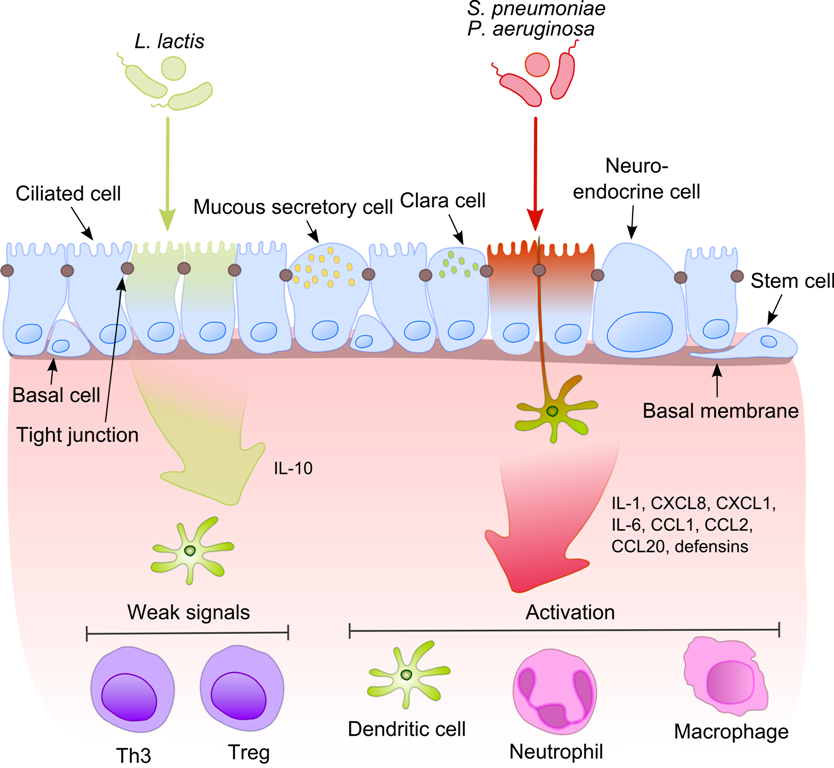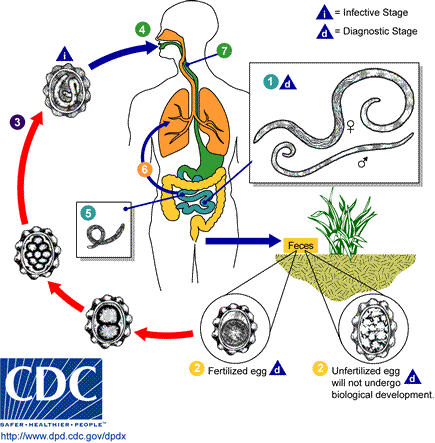|
Antimicrobial Chemotherapy
Antimicrobial chemotherapy is the clinical application of antimicrobial agents to treat infectious diseases. There are five types of antimicrobial chemotherapy: * Antibacterial chemotherapy, the use of antibacterial drugs to treat bacterial infections * Antifungal chemotherapy, the use of antifungal drugs to treat fungal infections * Anthelminthic chemotherapy, the use of antihelminthic drugs to treat worm infections * Antiprotozoal chemotherapy, the use of antiprotozoal drugs to treat protozoan infections * Antiviral chemotherapy, the use of antiviral drugs to treat viral infection A viral disease (or viral infection) occurs when an organism's body is invaded by pathogenic viruses, and infectious virus particles (virions) attach to and enter susceptible cells. Examples include the common cold, gastroenteritis, COVID-19, t ...s See also * Antimicrobial Agents and Chemotherapy * British Society for Antimicrobial Chemotherapy * Chemotherapy (journal) * Journal of An ... [...More Info...] [...Related Items...] OR: [Wikipedia] [Google] [Baidu] |
Antimicrobial Agent
An antimicrobial is an agent that kills microorganisms (microbicide) or stops their growth (bacteriostatic agent). Antimicrobial medicines can be grouped according to the microorganisms they are used to treat. For example, antibiotics are used against bacteria, and antifungals are used against fungi. They can also be classified according to their function. Antimicrobial medicines to treat infection are known as antimicrobial chemotherapy, while antimicrobial drugs are used to prevent infection, which known as antimicrobial prophylaxis. The main classes of antimicrobial agents are disinfectants (non-selective agents, such as bleach), which kill a wide range of microbes on surfaces to prevent the spread of illness, antiseptics which are applied to living tissue and help reduce infection during surgery, and antibiotics which destroy microorganisms within the body. The term ''antibiotic'' originally described only those formulations derived from living microorganisms but is now also ap ... [...More Info...] [...Related Items...] OR: [Wikipedia] [Google] [Baidu] |
Infectious Disease
An infection is the invasion of tissue (biology), tissues by pathogens, their multiplication, and the reaction of host (biology), host tissues to the infectious agent and the toxins they produce. An infectious disease, also known as a transmissible disease or communicable disease, is an Disease#Terminology, illness resulting from an infection. Infections can be caused by a wide range of pathogens, most prominently pathogenic bacteria, bacteria and viruses. Hosts can fight infections using their immune systems. Mammalian hosts react to infections with an Innate immune system, innate response, often involving inflammation, followed by an Adaptive immune system, adaptive response. Treatment for infections depends on the type of pathogen involved. Common medications include: * Antibiotics for bacterial infections. * Antivirals for viral infections. * Antifungals for fungal infections. * Antiprotozoals for protozoan infections. * Antihelminthics for infections caused by parasi ... [...More Info...] [...Related Items...] OR: [Wikipedia] [Google] [Baidu] |
Antibiotics
An antibiotic is a type of antimicrobial substance active against bacteria. It is the most important type of antibacterial agent for fighting pathogenic bacteria, bacterial infections, and antibiotic medications are widely used in the therapy, treatment and antibiotic prophylaxis, prevention of such infections. They may either bactericide, kill or bacteriostatic agent, inhibit the growth of bacteria. A limited number of antibiotics also possess antiprotozoal activity. Antibiotics are not effective against viruses such as the ones which cause the common cold or influenza. Drugs which inhibit growth of viruses are termed antiviral drugs or antivirals. Antibiotics are also not effective against fungi. Drugs which inhibit growth of fungi are called antifungal drugs. Sometimes, the term ''antibiotic''—literally "opposing life", from the Greek language, Greek roots ἀντι ''anti'', "against" and βίος ''bios'', "life"—is broadly used to refer to any substance used against ... [...More Info...] [...Related Items...] OR: [Wikipedia] [Google] [Baidu] |
Bacterial Infection
Pathogenic bacteria are bacteria that can cause disease. This article focuses on the bacteria that are pathogenic to humans. Most species of bacteria are harmless and many are beneficial but others can cause infectious diseases. The number of these pathogenic species in humans is estimated to be fewer than a hundred. By contrast, several thousand species are considered part of the gut flora, with a few hundred species present in each individual human's digestive tract. The body is continually exposed to many species of bacteria, including beneficial commensals, which grow on the skin and mucous membranes, and saprophytes, which grow mainly in the soil and in decaying matter. The blood and tissue fluids contain nutrients sufficient to sustain the growth of many bacteria. The body has defence mechanisms that enable it to resist microbial invasion of its tissues and give it a natural immunity or innate resistance against many microorganisms. Pathogenic bacteria are speci ... [...More Info...] [...Related Items...] OR: [Wikipedia] [Google] [Baidu] |
Antifungal Medication
An antifungal medication, also known as an antimycotic medication, is a pharmaceutical fungicide or fungistatic used to treat and prevent mycosis such as athlete's foot, ringworm, candidiasis (thrush), serious systemic infections such as cryptococcal meningitis, and others. Such drugs are usually obtained by a doctor's prescription, but a few are available over the counter (OTC). The evolution of antifungal resistance is a growing threat to health globally. Routes of administration Ocular Indicated when the fungal infection is located in the eye. There is currently only one ocular antifungal available: natamycin. However, various other antifungal agents could be compounded in this formulation. Intrathecal Used occasionally when there's an infection of the central nervous system and other systemic options cannot reach the concentration required in that region for therapeutic benefit. Example(s): amphotericin B. Vaginal This may be used to treat some fungal infec ... [...More Info...] [...Related Items...] OR: [Wikipedia] [Google] [Baidu] |
Fungal Infection
Fungal infection, also known as mycosis, is a disease caused by fungi. Different types are traditionally divided according to the part of the body affected: superficial, subcutaneous, and systemic. Superficial fungal infections include common tinea of the skin, such as tinea of the body, groin, hands, feet and beard, and yeast infections such as pityriasis versicolor. Subcutaneous types include eumycetoma and chromoblastomycosis, which generally affect tissues in and beneath the skin. Systemic fungal infections are more serious and include cryptococcosis, histoplasmosis, pneumocystis pneumonia, aspergillosis and mucormycosis. Signs and symptoms range widely. There is usually a rash with superficial infection. Fungal infection within the skin or under the skin may present with a lump and skin changes. Pneumonia-like symptoms or meningitis may occur with a deeper or systemic infection. Fungi are everywhere, but only some cause disease. Fungal infection occurs after spor ... [...More Info...] [...Related Items...] OR: [Wikipedia] [Google] [Baidu] |
Anthelmintic
Anthelmintics or antihelminthics are a group of antiparasitic drugs that expel parasitic worms (helminths) and other internal parasites from the body by either stunning or killing them without causing significant damage to the host. They may also be called vermifuges (those that stun) or vermicides (those that kill). Anthelmintics are used to treat people who are infected by helminths, a condition called helminthiasis. These drugs are also used to treat infected animals, particularly small ruminants such as goats and sheep. Anthelmintic medication is also used in mass deworming campaigns of school-aged children in many developing countries. Anthelmintics are also used for mass deworming of livestock. The drugs of choice for soil-transmitted helminths are mebendazole and albendazole; for schistosomiasis and tapeworms it is praziquantel. Types Many early treatments were herbal, such as the oil of herbs of the genus '' Chenopodium'' that were given as anthelmintic treatment for ... [...More Info...] [...Related Items...] OR: [Wikipedia] [Google] [Baidu] |
Helminthiasis
Helminthiasis, also known as worm infection, is any macroparasite, macroparasitic disease of humans and other animals in which a part of the body is infected with parasitism, parasitic worms, known as helminths. There are numerous species of these parasites, which are broadly classified into cestoda, tapeworms, trematoda, flukes, and nematode, roundworms. They often live in the gastrointestinal tract of their host (biology), hosts, but they may also burrow into other organ (anatomy), organs, where they induce physiological damage. Soil-transmitted helminthiasis and schistosomiasis are the most important helminthiases, and are among the neglected tropical diseases. These group of helminthiases have been targeted under the joint action of the world's leading pharmaceutical industry, pharmaceutical companies and non-governmental organizations through a project launched in 2012 called the London Declaration on Neglected Tropical Diseases, which aimed to control or eradicate certain n ... [...More Info...] [...Related Items...] OR: [Wikipedia] [Google] [Baidu] |
Antiprotozoal
Antiprotozoal agents ( ATC code: ATC P01) is a class of pharmaceuticals used in treatment of protozoan infection. A paraphyletic group, protozoans have little in common with each other. For example, '' Entamoeba histolytica'', a unikont eukaryotic organism, is more closely related to ''Homo sapiens'' (humans), which also belongs to the unikont phylogenetic group, than it is to '' Naegleria fowleri'', a "protozoan" bikont. As a result, agents effective against one pathogen may not be effective against another. Antiprotozoal agents can be grouped by mechanism or by organism. Recent papers have also proposed the use of viruses to treat infections caused by protozoa. Overuse or misuse of antiprotozoals can lead to the development of antiprotozoal resistance. Medical uses Antiprotozoals are used to treat protozoal infections, which include amebiasis, giardiasis, cryptosporidiosis, microsporidiosis, malaria, babesiosis, trypanosomiasis, Chagas disease, leishmaniasis, and to ... [...More Info...] [...Related Items...] OR: [Wikipedia] [Google] [Baidu] |
Protozoan Infection
Protozoan infections are parasitic diseases caused by organisms formerly classified in the kingdom Protozoa. These organisms are now classified in the supergroups Excavata, Amoebozoa, Harosa (SAR supergroup), and Archaeplastida. They are usually contracted by either an insect vector or by contact with an infected substance or surface. Protozoan infections are responsible for diseases that affect many different types of organisms, including plants, animals, and some marine life. Many of the most prevalent and deadly human diseases are caused by a protozoan infection, including African sleeping sickness, amoebic dysentery, and malaria. The species originally termed "protozoa" are not closely related to each other and only have superficial similarities (eukaryotic, unicellular, motile, though with exceptions). The terms "protozoa" and "protist" are usually discouraged in modern biosciences. However, this terminology is still encountered in medicine. This is partially because of t ... [...More Info...] [...Related Items...] OR: [Wikipedia] [Google] [Baidu] |
Antiviral Drug
Antiviral drugs are a class of medication used for treating viral infections. Most antivirals target specific viruses, while a broad-spectrum antiviral is effective against a wide range of viruses. Antiviral drugs are a class of antimicrobials, a larger group which also includes antibiotic (also termed antibacterial), antifungal and antiparasitic drugs, or antiviral drugs based on monoclonal antibodies. Most antivirals are considered relatively harmless to the host, and therefore can be used to pharmacotherapy, treat infections. They should be distinguished from virucides, which are not medication but deactivate or destroy virus particles, either inside or outside the body. Natural virucides are produced by some plants such as eucalyptus and Australian tea trees. Medical uses Most of the antiviral drugs now available are designed to help deal with HIV, Herpesviridae, herpes viruses, the hepatitis B and Hepatitis C, C viruses, and Influenzavirus A, influenza A and Influenzavirus ... [...More Info...] [...Related Items...] OR: [Wikipedia] [Google] [Baidu] |
Viral Infection
A viral disease (or viral infection) occurs when an organism's body is invaded by pathogenic viruses, and infectious virus particles (virions) attach to and enter susceptible cells. Examples include the common cold, gastroenteritis, COVID-19, the flu, and rabies. Structural characteristics Basic structural characteristics, such as genome type, virion shape and replication site, generally share the same features among virus species within the same family. * Double-stranded DNA families: three are non-enveloped (''Adenoviridae'', ''Papillomaviridae'' and ''Polyomaviridae'') and two are enveloped (''Herpesviridae'' and ''Poxviridae''). All of the non-enveloped families have icosahedral capsids. * Partly double-stranded DNA viruses: ''Hepadnaviridae''. These viruses are enveloped. * One family of single-stranded DNA viruses infects humans: ''Parvoviridae''. These viruses are non-enveloped. * Positive single-stranded RNA families: three non-enveloped (''Astroviridae'', ''Calicivirid ... [...More Info...] [...Related Items...] OR: [Wikipedia] [Google] [Baidu] |






